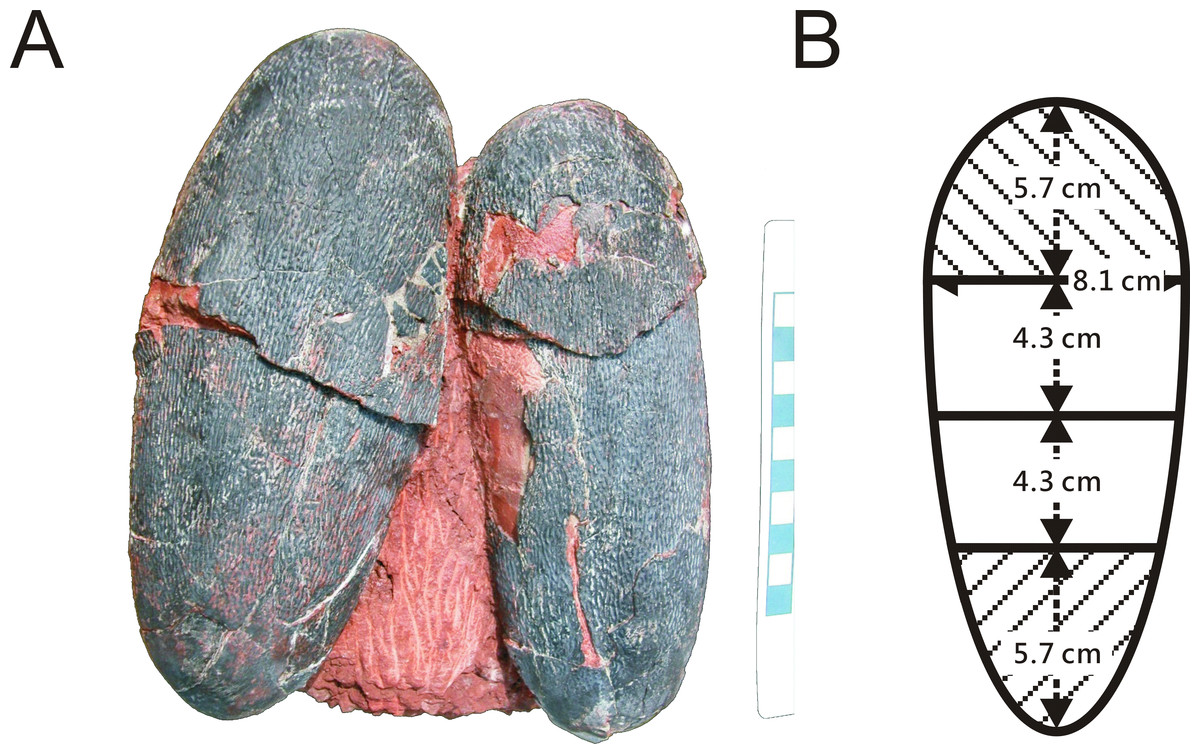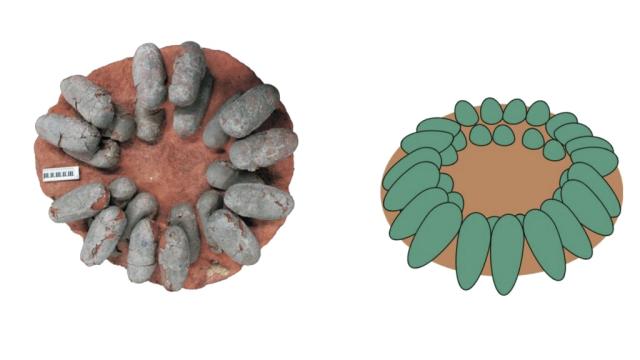In the spring, you might find fragmented blue eggshells sitting on the footpath, a sign that baby robins hatched somewhere up above. Taking the same walk 66 million years ago, you may have found a giant version of those same blue eggs. Except a much larger, sillier-looking dinosaur was probably sitting nearby.
Image: Wiemann et al
There are a few pigments that give bird eggs a blue-green colour, called protoporphyrin and biliverdin. An international team of paleontologists from the United States and Germany analysed several dinosaur eggs that likely belonged to one egg-laying species from the late Cretaceous period, Heyuannia huangi. They used some high-tech chemistry to see if they could find these same pigments — and they did. The discovery could have important implications for the study of dino eggs, and offers insight into dinosaur behaviour.

Image: Wiemann et al (Peerj 2017)
The researchers collected three eggs from Chinese fossil deposits, cleaned them, and ran samples through a mass spectrometer, a machine that can separate chemicals out by mass based on how far they travel. The team compared the eggs to plain dirt, and to blue-green emu eggs, and found that, yep, dino eggs seemed to have the same readings in the machine as emu eggs did. The researchers were looking at some ancient blue-green dino eggs.
Their next question was, well, what does that mean? Combining how the eggs were arranged in the nest and their colour allowed them to tell a story about H. huangi’s behaviour — informed speculation, of course. They think that maybe the dino faced similar challenges, evolutionarily, to birds like emus or cassowaries.
In fact, the discovery could show that some dinosaurs behaved a lot more liked birds than we thought. “According to the sexual signalling hypothesis, the reconstructed blue-green eggs support the origin of previously hypothesized avian paternal care in oviraptorid dinosaurs,” the authors write in the study published recently in the journal PeerJ. In other words, scientists have linked coloured eggs to partially open nests and fathers taking care of baby birds, implying that these dinosaurs may have done the same.
Mark Norell, a palaeontologist at the American Museum of Natural History in New York City, told National Geographic that originally, scientists thought only birds had coloured eggs. “Dinosaurs evolved coloured eggs before birds evolved — and the reason birds have coloured eggs is because they were present in their ancestors, the nonavian dinosaurs,” he told them. On top of that, this study is offers another example of how chemistry can help us understand dinosaurs.
The question that may never be answered, however: What would a dinosaur egg omelet taste like?
